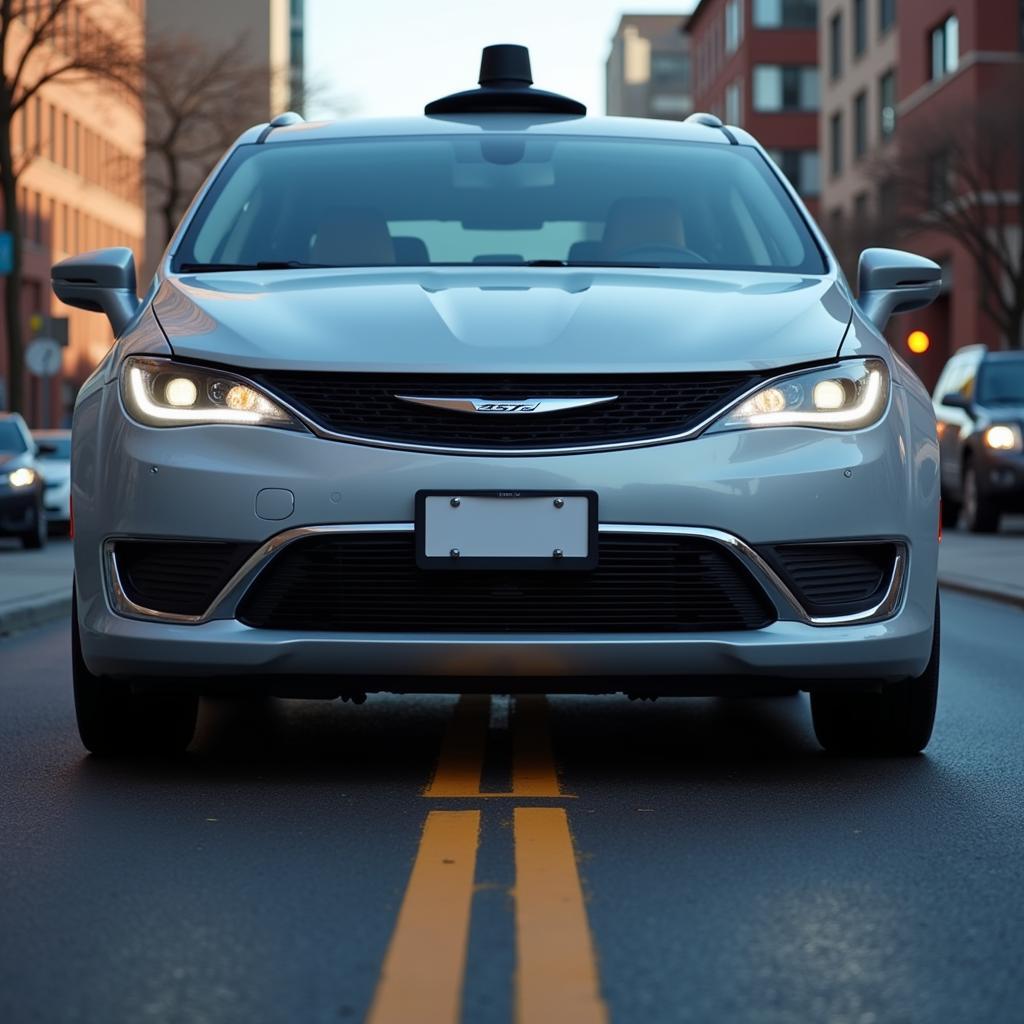Self-driving cars have captured our imaginations, promising a future of safer, more efficient transportation. However, despite the hype, these autonomous vehicles are still grappling with several significant problems that hinder their widespread adoption. This article delves into the complexities and challenges facing self-driving cars, shedding light on the roadblocks to their full integration into our daily lives.
 Self-Driving Car Sensor Malfunction
Self-Driving Car Sensor Malfunction
Technical Challenges: The Brains Behind the Wheel
One of the most significant problems with self-driving cars lies in their complex technology. These vehicles rely heavily on an intricate network of sensors, software, and algorithms to perceive and navigate their surroundings.
- Sensor Limitations: Self-driving cars utilize various sensors, such as cameras, radar, and lidar, to gather information about their environment. However, these sensors have limitations. Adverse weather conditions, like heavy rain, fog, or snow, can interfere with sensor accuracy, making it difficult for the car to perceive its surroundings accurately.
- Software Glitches: The software controlling self-driving cars is incredibly complex. Like any software, it’s susceptible to bugs and glitches, which can have dangerous consequences in a self-driving scenario.
- Ethical Dilemmas: Programming self-driving cars to make ethical decisions in unavoidable accident scenarios poses a significant challenge. These moral dilemmas, often referred to as the “trolley problem,” raise questions about how these vehicles should prioritize safety in complex situations.
 Ethical Dilemma of Self-Driving Cars
Ethical Dilemma of Self-Driving Cars
Infrastructure and Regulatory Hurdles: Paving the Way for Autonomy
Beyond the technical challenges, self-driving cars face significant hurdles regarding infrastructure and regulations.
- Inadequate Infrastructure: Current road infrastructure is primarily designed for human drivers. Self-driving cars require clear lane markings, well-maintained roads, and standardized traffic signals for optimal performance. The lack of such infrastructure in many areas poses a challenge for widespread adoption.
- Regulatory Uncertainty: The legal framework surrounding self-driving cars is still evolving. Clear regulations are needed to govern liability in accidents, establish safety standards, and address data privacy concerns. This lack of regulatory clarity can hinder investment and innovation in the field.
Public Perception and Acceptance: Building Trust in Autonomous Technology
Despite the potential benefits, public perception and acceptance remain significant obstacles for self-driving cars.
- Safety Concerns: High-profile accidents involving self-driving cars have raised concerns about their safety. While proponents argue that autonomous vehicles have the potential to be safer than human drivers, building public trust in this technology will require a consistent track record of safe operation.
- Job Displacement: The rise of self-driving cars raises concerns about job displacement, particularly for those in the transportation industry. Addressing these concerns and providing retraining opportunities for affected workers is crucial for societal acceptance.
Cybersecurity Threats: Protecting Self-Driving Cars from Digital Attacks
As self-driving cars become more connected, they also become vulnerable to cybersecurity threats.
- Hacking Risks: The software and systems controlling self-driving cars could be potential targets for hackers. A successful cyberattack could have dangerous consequences, potentially allowing malicious actors to take control of the vehicle or manipulate its systems.
- Data Privacy Concerns: Self-driving cars collect vast amounts of data about their surroundings and passengers. Protecting this data from unauthorized access and ensuring privacy is paramount.
For further insights into the problems and concerns surrounding self-driving cars, you can explore these resources:
- Why are self-driving cars a problem?
- Problems and concerns of self-driving cars
- Self-driving cars hacking problems
Overcoming the Roadblocks: A Collaborative Effort
Despite the challenges, the development of self-driving cars continues to advance. Addressing the technical, infrastructural, regulatory, and societal concerns surrounding these vehicles requires a collaborative effort between automakers, technology companies, policymakers, and the public. By working together, we can pave the way for a future where self-driving cars deliver on their promise of safer, more efficient, and accessible transportation.
“The key to unlocking the full potential of self-driving cars lies in addressing the complex interplay of technology, infrastructure, regulation, and public perception,” says Dr. Emily Carter, a leading researcher in autonomous vehicle technology. “It’s a multifaceted challenge that demands a holistic approach.”
 Self-Driving Cars in Future Transportation
Self-Driving Cars in Future Transportation
Conclusion: Navigating the Future of Mobility
The road to fully autonomous vehicles is undeniably complex, fraught with technological hurdles, ethical dilemmas, and societal concerns. However, the potential benefits of this technology, from increased safety and efficiency to improved accessibility, remain a powerful driving force. As we continue to navigate the challenges and embrace the opportunities presented by self-driving cars, one thing is clear: the future of mobility is evolving, and autonomous vehicles will undoubtedly play a significant role in shaping that future.
For any questions or concerns regarding your vehicle’s performance or the adoption of new automotive technologies, don’t hesitate to reach out to the experts at AutoTipPro. Contact us at +1 (641) 206-8880 or visit our office at 500 N St Mary’s St, San Antonio, TX 78205, United States. We’re here to guide you through the ever-evolving landscape of automotive technology.






Leave a Reply